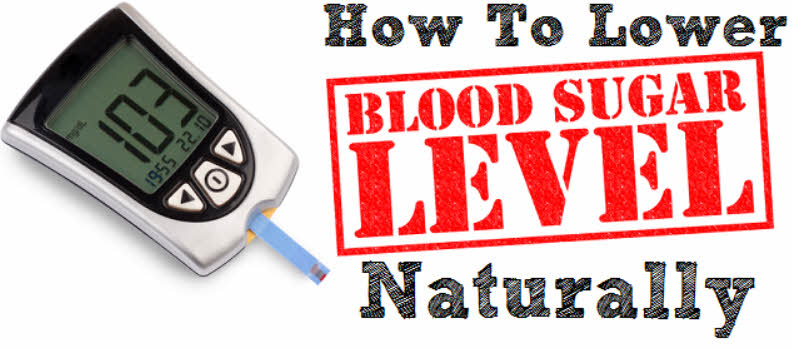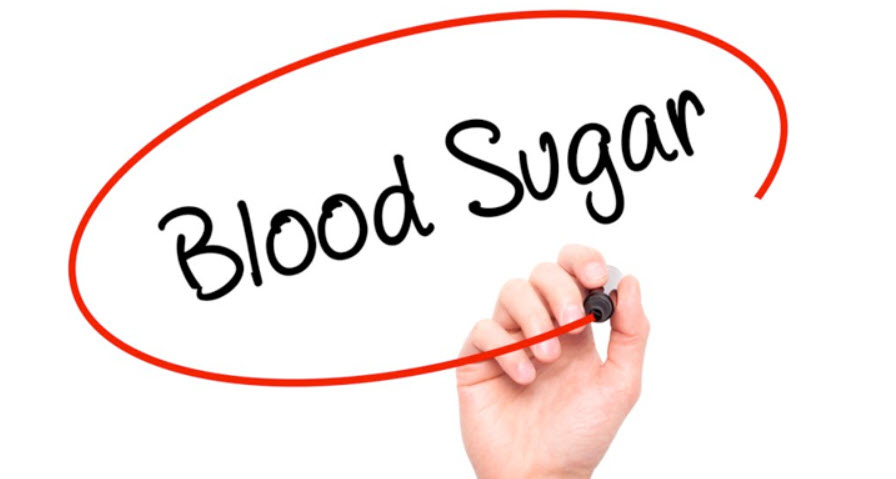
The Inside Scoop On Blood Sugar Management.
One cookie may not kill you, but consuming high amounts of sugar every day will. High-carbohydrate foods — like cookies — lead to higher blood sugar (glucose) levels, and to put is simply high blood sugar is toxic to the body.
Luckily, we have a hormone called insulin that helps lower blood sugar (glucose) by pushing sugar into cells before it has a chance to cause problems.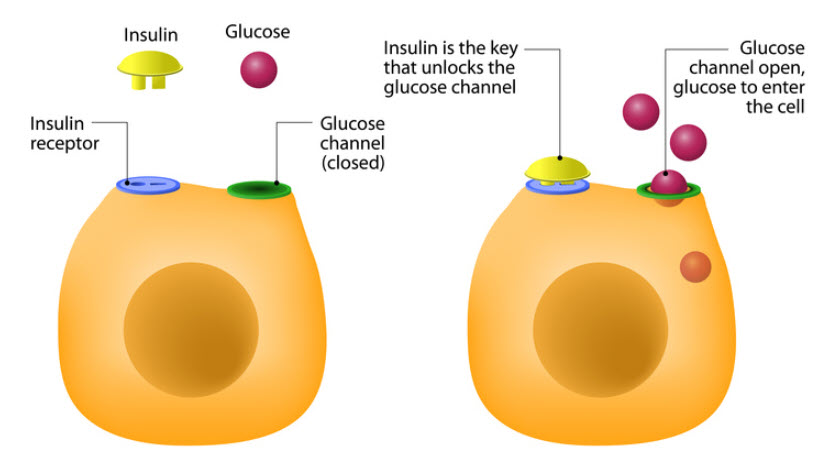
Insulin is a cellular superhero, but it cannot keep up with all of the high-carbohydrate and sugar-laden foods that are abundantly eaten today. This is why we need to assist our body in maintaining healthy blood sugar levels before it’s too late.
High Blood Sugar Symptoms
Processed foods like cookies, cakes, and candy (and even starchy plant foods like rice, beans, and potatoes) can cause rapid increases in blood sugar levels.
After just one meal containing these foods, blood sugar can get so high that insulin can’t keep up. Side effects like fatigue, blurred vision, headaches, trouble concentrating, and frequent urination can result.
If you consume high-carbohydrate foods every day, you increase your risk of type 2 diabetes — the medical diagnosis for having chronically high blood sugar levels that are caused by diet and lifestyle. (This is different from type 1 diabetes — a condition where the body produces little to no insulin.)
Over 422 million people have diabetes worldwide, and their high blood sugar levels are destroying their bodies. In North America 1 in 4 adults over 40 have diabetes, with close to to 80 million in North America believed to have pre-diabetes!
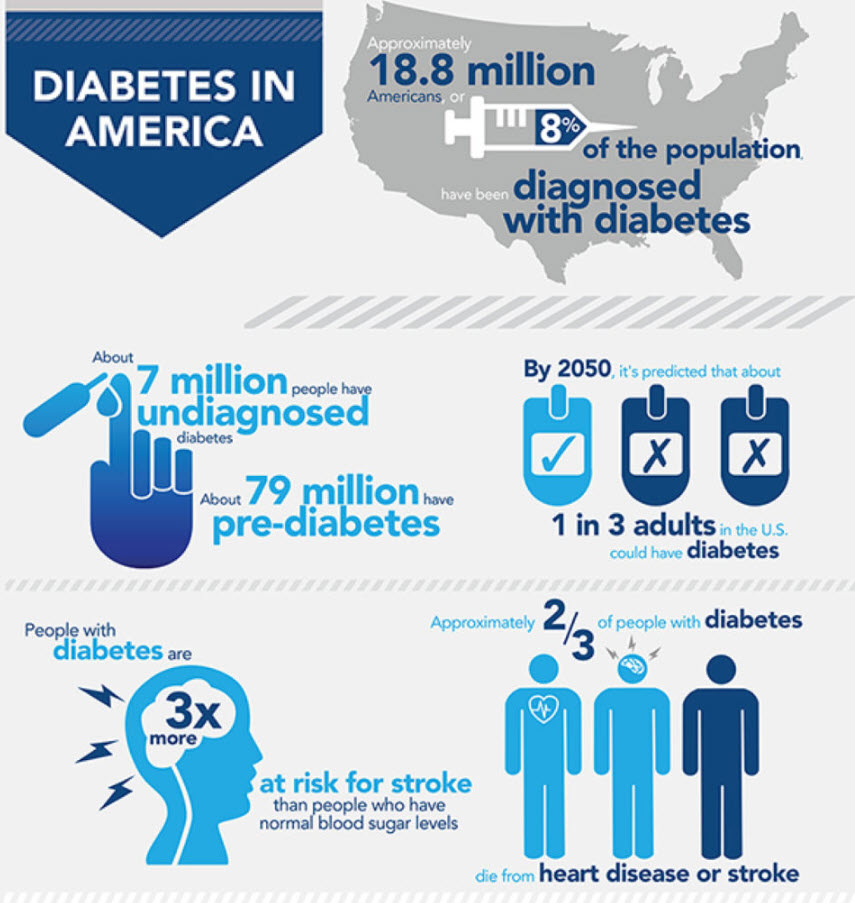
Symptoms of high blood sugar usually come from diet. Blood vessels, kidneys, eyes, and nerves are damaged the most by high blood sugar levels, which leads to:
- Reduced blood flow.
- A 200-300% increased risk of heart attacks and strokes.
- Nerve damage in the feet that can lead to foot ulcers, infection, and amputation.
- Worsening vision or blindness.
- Kidney failure.
How To Know if Your Blood Sugar Levels Are Too High
To know if your blood sugar levels are chronically high, many doctors will check your A1C levels. A1C stands for glycated hemoglobin, which is formed when blood sugar attaches to hemoglobin (the oxygen-carrying protein in red blood cells).
A1C tests measure the percentage of your hemoglobin that has blood sugar attached to it. If blood sugar levels have been high for the past 3 months, then more hemoglobin will be glycated.
Thus, A1C testing provides an accurate measurement of how high your blood sugar has been over the past two to three months.
- An A1C level of 6.5 percent or higher on two separate tests indicates that you have diabetes.
- An A1C between 5.7 and 6.4 percent indicates pre-diabetes. Below 5.7 is considered normal.
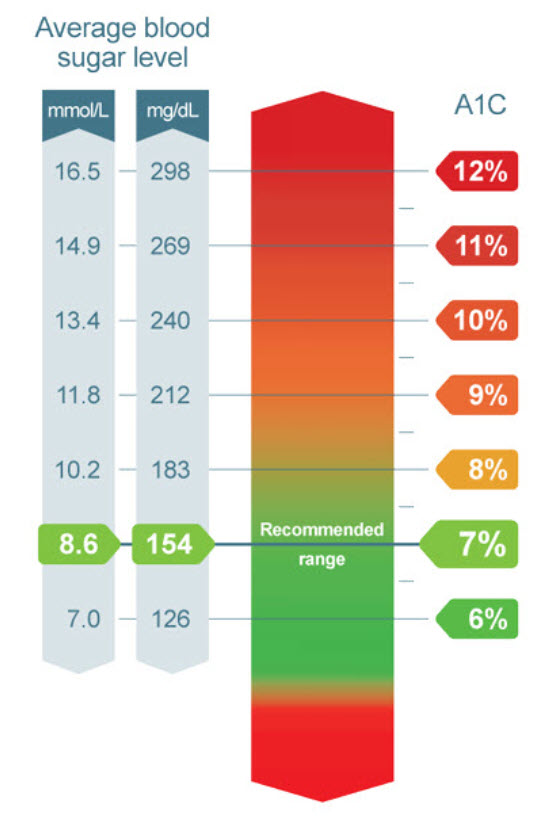
But Dr. Chris Masterjohn suggests that you shouldn’t only look at A1C levels. This is because high A1C levels do not directly cause diabetes, and people with diabetes can have low A1C levels (if they have faster blood cell turnover than the average person).
In other words, A1C testing provides an indirect measurement of blood sugar levels so it isn’t always a reliable indicator for diabetes.
For example, if you are obese and your fasting blood sugar is consistently above 100 mg/dl (pre-diabetic), but your A1C levels are low, then you should still be considered as a pre-diabetic that needs to implement dietary and lifestyle changes to lower your blood sugar.
This is why it is important to consider your fasting blood glucose level, and your blood sugar levels after a meal, and other measurements like weight and waist circumference to develop a clearer picture of what is going on inside of the body.
But if you make the simple changes to your diet, you should not have to worry. You can lower your blood sugar levels, A1C levels, and lose weight naturally.
Earlier in this article, we explored how you can raise your blood sugar. Just eat cookies, cakes, rice, potatoes, and other high-carbohydrate foods, and you will be on the fast track toward diabetes.
So will eating fewer carbohydrates lower your blood sugar levels? The answer is “Yes”. Eat less sugars and starches and your blood sugar will be lower. It’s that simple.
In fact, the American Diabetes Association suggests eating only low glycemic index foods (foods that don’t spike your blood sugar levels). Their diabetes diet includes fruits, vegetables, whole grains, beans, non-fat dairy products, fish, lean meat, and poultry.
This is much better than eating processed foods, but there is one problem. Some of these foods contain enough carbohydrates to raise blood sugar levels rather than lower them.
Lowering blood sugar is as simple as declining food made with sugar.
In a meta-analysis of 14 studies on diets consisting of low glycemic index foods (as suggested by the American Diabetes Association), researchers concluded that “choosing low-GI foods in place of conventional or high-GI foods has a small but clinically useful effect on medium-term glycemic control in patients with diabetes.”
What that means is that eating low glycemic index foods are (kind of) helpful. Not very promising for those who don’t want to rely on blood sugar lowering medications for the rest of their life.
But, there is hope. Recent research has found a way of eating that can help diabetics get off medication and naturally control their blood sugar.
Using Food To Stop Diabetes.
Can you use food to cure type 2 diabetes? Answered very simply…. Yes, with a consistent low carb diet.
This is an excerpt from a study that put 28 overweight participants with type 2 diabetes on the low carb diet…
… “Diabetes medications were reduced or discontinued in 17 of the 21 participants where seven of the twenty-eight participants were able to discontinue their diabetes medication after 16 weeks.”
Put people with type two diabetes on a low carbohydrate diet, and their health improves. Weight is lost, blood sugar and A1C levels drop, and other health parameters improve significantly.
Even studies that put healthy individuals on a ketogenic diet (very low carb diet) found similar improvements.
Ketogenic diets may be an ideal diet for people with type 1 diabetes as well. One case report of a 19-year-old male found that a paleolithic ketogenic diet may have the ability “to halt or reverse autoimmune processes destructing pancreatic beta cell function in [Type 1 Diabetes].” In other words, a diet consisting of low-carbohydrate, whole-foods may be able to manage or treat type 1 diabetes.
Another longer wider study provides us with another important piece to the blood-sugar-lowering puzzle.
After analyzing the data from 10 randomized trials, researchers found that low-carbohydrate diets have a greater effect on blood sugar control in type 2 diabetes patients than high-carbohydrate diets.
In fact, they found a distinct relationship between carbohydrate restriction and blood sugar lowering. Less carbohydrate consumption meant lower blood sugar levels.
This is why the ketogenic diet — the lowest of low-carbohydrate diets — is superior in lowering blood sugar levels. The ketogenic diet should be known as the real type 2 diabetes diet.
A Brief Overview of the Ketogenic Diet:
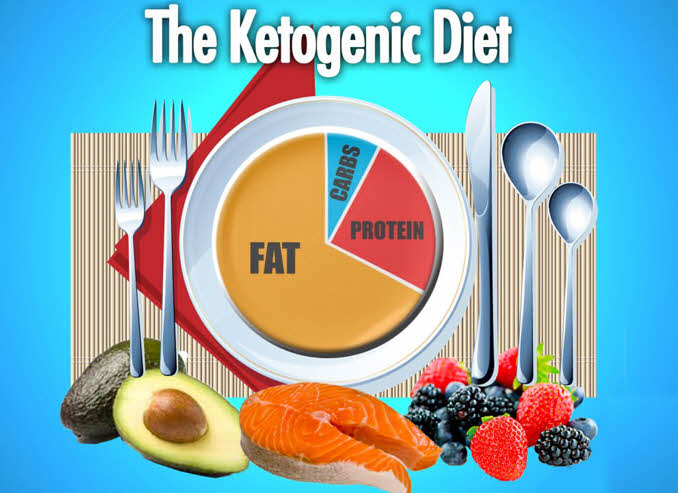
For those who don’t know, a ketogenic diet restricts daily carbohydrates to around 20-30g of net carbs (net carbs are total dietary carbohydrates minus the total fiber).
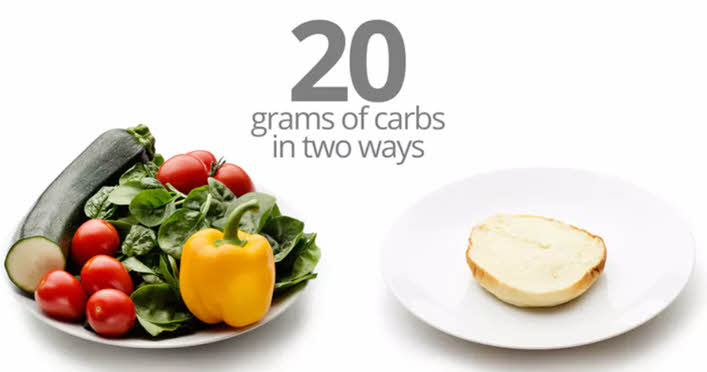
Restricting carbohydrates to this degree forces your body to burn fat for fuel — a process called ketosis. Once your body is in ketosis, your blood sugar levels will decrease and your A1C levels will drop.
How A Basic Ketogenic Diet Works:
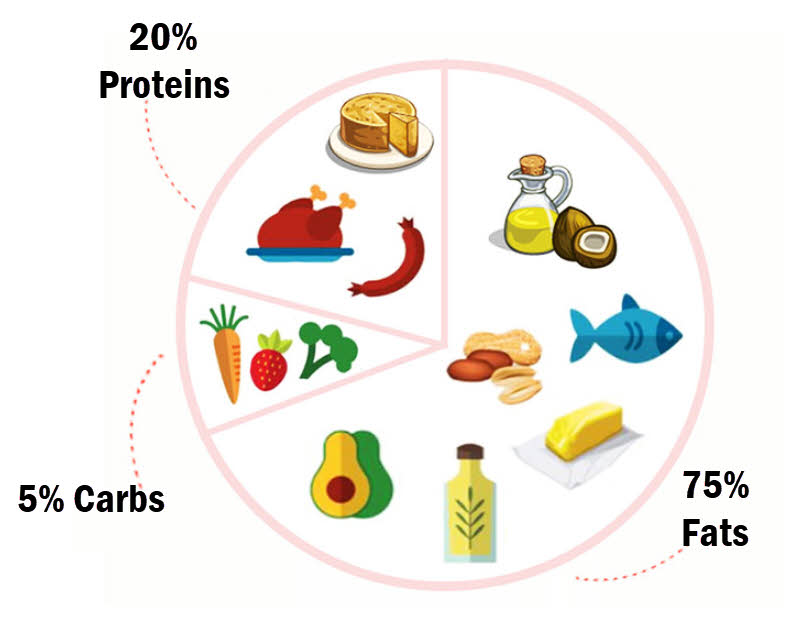
What To (& Not To) Eat With A Ketogenic diet:
Try Not Eat:
- Grains – wheat, corn, rice, cereal, etc.
- Sugar – honey, agave, maple syrup, etc.
- Fruit – apples, bananas, oranges, etc.
- Tubers – potato, yams, etc.
Try To Eat:
- Meats – fish, beef, lamb, poultry, eggs, etc.
- Leafy Greens – spinach, kale, etc.
- Above ground vegetables – broccoli, cauliflower, etc.
- High Fat Dairy – hard cheeses, high fat cream, butter, etc.
- Nuts and seeds – macadamias, walnuts, sunflower seeds, etc.
- Avocado and berries – raspberries, raspberries, and other low glycemic impact berries
- Sweeteners – stevia, erythritol, monk fruit, and other low-carb sweeteners
- Other fats – coconut oil, high-fat salad dressing, saturated fats, etc.
A More Detailed Ketogenic Food List

Before you start, it is important to know that your blood sugar won’t drop instantly. Some studies suggest that you may have to stay on a ketogenic diet for 16 weeks before your blood sugar is under control.
However, this doesn’t mean that you will have to wait that long. You can lower your blood sugar today — especially if you eat the ten foods that lower your blood sugar naturally.
Ten Foods that Lower Blood Sugar Right Away
Patience is a virtue, but sometimes it is better to be impatient when it comes to your health. For those who need to lower their blood sugar levels today, here is a list of ten blood sugar lowering foods.
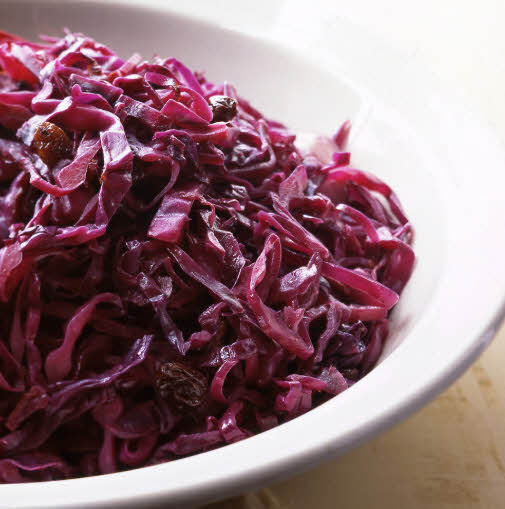
1. Red Cabbage
Red Cabbage is packed with anthocyanins — the pigment that gives this vegetable its dark red color. Many studies have found that anthocyanins can prevent or reverse obesity and type 2 diabetes by reducing inflammation, lowering blood sugar, and improving insulin resistance (the driving factor that leads to type 2 diabetes).
If you are not a fan of red cabbage, you can still get the benefits of blood sugar lowering anthocyanins by eating other dark red, purple, or blue plant foods like blueberries.
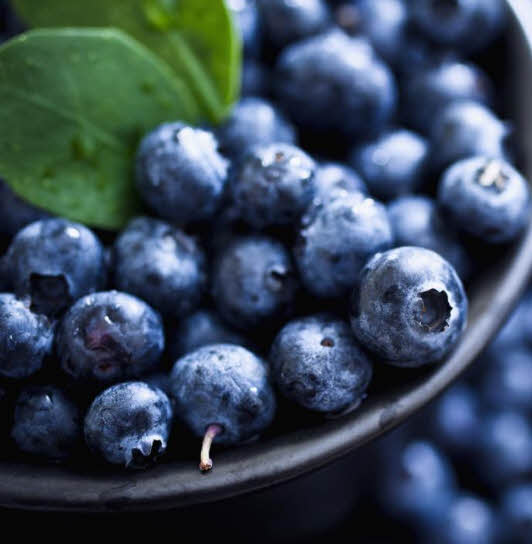
2. Blueberries
Blueberries contain a type of anthocyanin that is an active blood sugar lowering agent. Studies have found that the flavonoids in blueberries (and other berries) may provide us with cardiovascular benefits, cancer prevention, and cognitive improvement.
When you are on a ketogenic diet, however, it is important to limit the consumption of blueberries because they contain about 15 grams of sugar per cup. This amount of sugar can take you out of ketosis.
If you want to lower your blood sugar without the extra carbohydrates, then try using spices like turmeric and cinnamon.
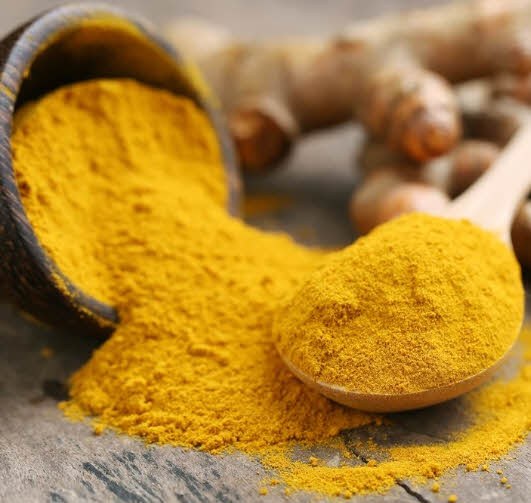
3. Turmeric
Turmeric contains a bright yellow chemical called curcumin. Curcumin has been studied extensively as a potential treatment for diabetes — and the results are promising.
Not only does curcumin lower blood sugar like red cabbage and blueberries, it also promotes the function of the beta cells in the islets of Langerhans of the pancreas (the cells that produce insulin). This means that curcumin can lower your blood sugar in the short-term and improve your ability to use carbohydrates in the long-term.
One concern about curcumin is that it is poorly absorbed. If you want to ensure that you will get the benefits of curcumin, it is best to have it in a supplement called Meriva or a supplement that combines Bioperine with curcumin. Both curcumin preparations increase the absorption of curcumin much more than just having curcumin alone.
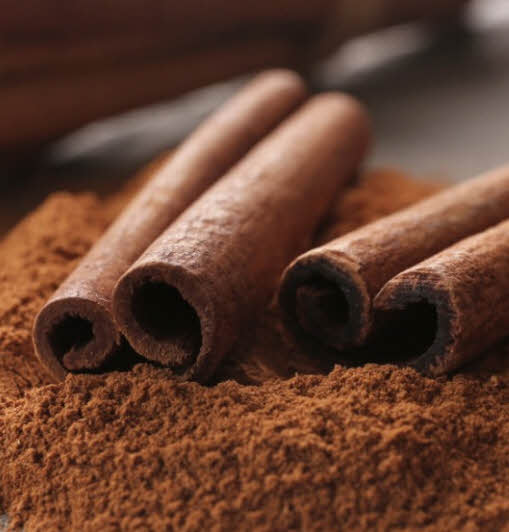
4. Cinnamon
Whether it is Ceylon or Cassia cinnamon, it will reduce fasting blood sugar levels and improve insulin sensitivity (the opposite of insulin resistance). But there is one caveat — Cassia cinnamon contains a toxic compound called coumarin that can cause kidney, liver, and lung damage.
Just 1-2 teaspoons a day of Cassia cinnamon has enough coumarin to cause toxic effects, so it is best to stick with Ceylon cinnamon to lower blood sugar levels.
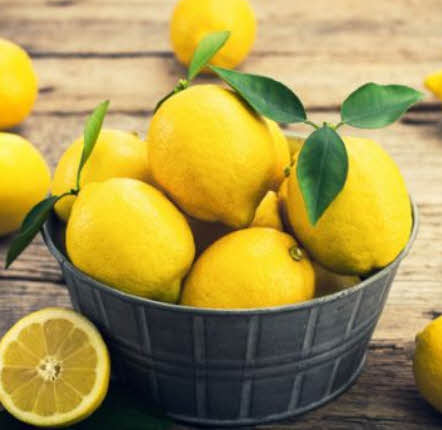
5. Lemons
There are thousands of different flavonoids that can be found in plant foods, and lemons have two that can improve fat and glucose metabolism. These flavonoids are called hesperidin and naringin, and they help lower blood sugar, cholesterol, and triglyceride levels.
The best part is that one lemon contains only 5 grams of carbohydrates. This means that you can put lemon juice in your water or meals to provide you with health-boosting, blood-sugar-lowering flavanoids whenever you want. (Just make sure you don’t have so many lemons that you leave no room for carbohydrates from vegetables.)
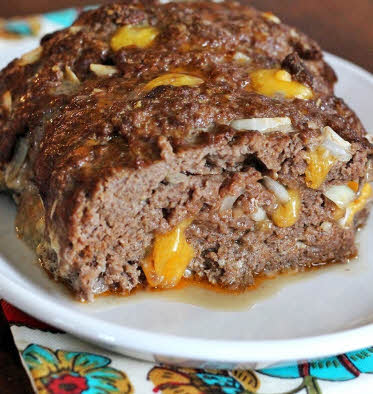
6. 100% Grass-Fed Beef and High-fat Dairy
Does meat lower blood sugar?
Yes, it does. But only if it has high levels of the fatty acid called conjugated linoleic acid (CLA). CLA has been found to improve blood glucose control and insulin sensitivity in multiple prediabetic and diabetic mouse studies. No studies have been conducted to find out what CLA does to blood sugar levels in humans, but other studies suggest that it has anti-carcinogenic effects.
The reason why I suggest having 100% grass fed beef is because it has much more CLA and other health-promoting compounds than conventional grain-fed beef.
100% grass-fed lamb and high-fat dairy contain high levels of CLA as well.
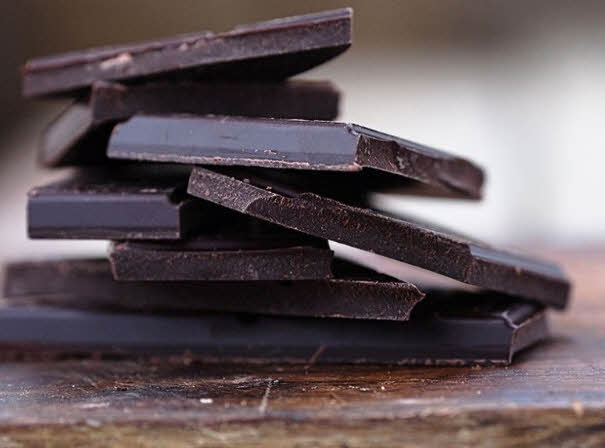
7. Dark Chocolate
This guilty pleasure may be as pleasureful for you as it is for your body. The cacao in dark chocolate contains many flavanols (a type of flavonoid) that decrease blood pressure and insulin resistance. This decrease in insulin resistance helps the cells use up excess blood sugar, which lowers blood sugar naturally.
However, make sure you are consuming the darkest chocolate you can find (85% or higher) because most dark chocolate bars contain processed sugar. You can avoid this by making your own dark chocolate at home.
Simply melt a half cup of coconut oil in a pan, add in a half cup of raw organic cacao powder (because it has the highest flavanol content) with a tablespoon of a low-calorie sweetener like erythritol. Stir until it is completely mixed, transfer it to a container, and put it in the refrigerator. After a couple hours, you will have your own blood-sugar-lowering dark chocolate without any dubious ingredients.

8. Broccoli Sprouts
Dozens of studies on broccoli sprouts have surfaced over the past decade. They have been found to have anti-cancer and anti-inflammatory properties, but do these sprouts also help lower blood sugar?
In one randomized double-blind clinical trial, researchers found that 10 grams of broccoli sprouts per day significantly decreased insulin levels. This suggests that broccoli sprouts may improve insulin sensitivity, leading to lower blood sugar levels.
These medicinal sprouts can easily be grown indoors in less than a week (for cheap). Once they are finished growing, you can have them as a snack or with meals.
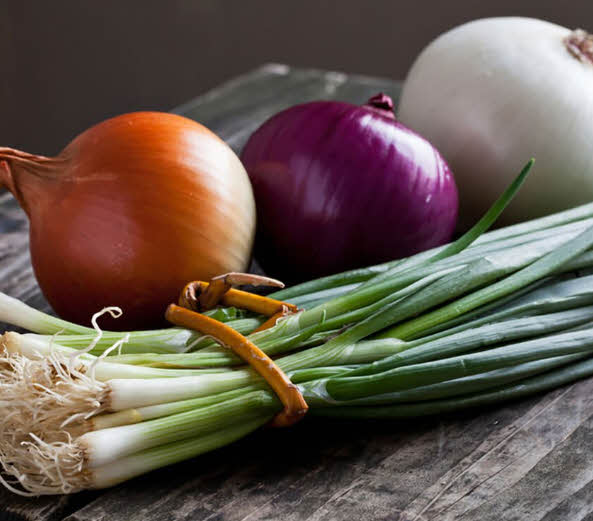
9. Onions
Onion bulb extract was found to strongly lower blood glucose in diabetic rats. Although onion’s effect on the blood sugar levels of humans is uncertain, this vegetable still has many potential health benefits.
These health benefits are partly caused by quercetin, a flavonoid antioxidant that is found in many vegetables including onions. Quercetin has been found to lower blood sugar before and after meals in many different animals with diabetes. This is a promising finding for those who want to lower their blood sugar.
However, onions aren’t the best vegetable if you want to maximize your quercetin consumption.
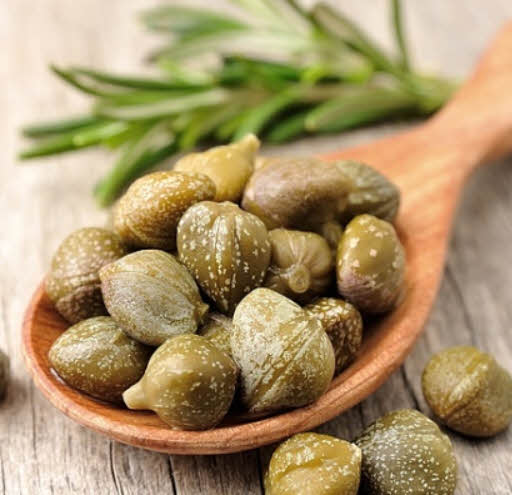
10. Capers
Capers have the highest quercetin content of all the foods that have been studied. These edible flower buds are picked just before they ripen and pickled before they hit your taste buds with their tangy, briny, and slightly lemony flavor.
Studies on capers have found that they have so much antioxidant activity that just a small amount prevents fat from oxidizing and causing cell damage. This makes capers the perfect addition to any meal that has meat and fat in it, which is pretty much in everything you will eat on a ketogenic diet.
Putting it all Together into One Blood-Sugar-Lowering Meal
Eating these ten foods on a daily basis will help you lower your blood sugar levels faster than the participants of the studies we spoke of earlier. But how do you fit these foods into your day?
Other Simple, Proven Ways to Lower Blood Sugar
Besides diet, there are some extra ways that you can lower your blood sugar levels naturally. Below, you’ll find a short list on what to implement into your life to reduce your blood sugar.

1. Exercise
The fastest way to lower your blood sugar levels is by exercising. However, it is important to consider the type of exercise.
Low-intensity exercises like walking and cycling have a minimal effect on blood sugar levels unless it lasts for longer than an hour. Studies suggest that the optimal exercise strategy is high-intensity interval training.
Many different variations of high-intensity interval training can improve insulin sensitivity and lower blood sugar levels. One of the high-intensity workouts used in many experiments went like this. Thirty seconds of maximal cycling efforts 4 to 6 times separated by 4 minutes of rest. That’s all you need to do to lower your blood sugar levels. And if you don’t have access to a bicycle or stationary bike, all you have to do is sprint.
Exercise can reduce blood sugar.
An example sprinting workout for one of the studies is to do 5-10 near-maximal sprints for 30 seconds with 3-minute rest between. By doing this, you can lower your blood sugar in less than 20 minutes (for free).
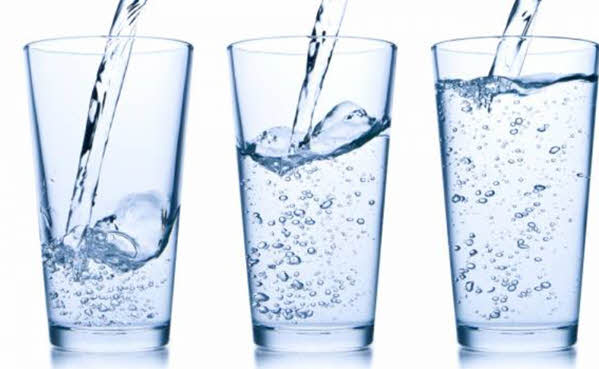
2. Drink More Water
Before, during, and after exercise, drink water. Although there are no studies that examine the direct effect that water consumption has on blood sugar levels, one observational study found that people with the highest blood sugar levels tended to drink the least amount of water.
This correlation can be explained by the fact that the systems that control both blood sugar and fluid levels are linked. In other words, drinking more water can indirectly improve your blood sugar levels.
Drinking more water will always help.

3. Sleep
Get a good night sleep (for at least 7 hours), and it will help you maintain healthy blood sugar levels. But if you sleep for only 4 to 5 hours a night, your fasting blood sugar levels will increase significantly.
Continue to sleep like this, and your cells become resistant to insulin. As this vicious cycle continues, your blood sugar continues to raise regardless of how little sugar you eat. This sounds eerily familiar to what stress does to the body because it is.
Sleeping less is a form of stress that leads to more cortisol release than normal. The cortisol raises blood sugar levels and tells the cells to become more resistant to insulin.
Sleep will help the body be active and recover.
This is a perfect strategy to ensure that you have enough energy to handle a short-term stressor (like when a hungry lion is chasing you), but it is not the best way to handle a long-term stressor (like a sleep-deprived life). To improve your sleep quality and reduce stress at the same time, meditate for 10 to 15 minutes before bed time. This will train your mind to relax so that you can drift off to sleep.
The Bottom Line…
A low carb or a very low carb diet like the ketogenic diet is the most effective diet for lowering blood sugar levels. In fact, it is so effective that many diabetics were able to stop their medications completely.
To lower your blood sugar levels even faster, it is best to include blood sugar lowering foods like red cabbage, blueberries, capers, lemon, onion, broccoli sprouts, dark chocolate, and 100% grass-fed beef in your diet.
Remember to continue taking Organic Sulfur which is a key contributor to optimal carbohydrate metabolization .
Sulfur is also a core building block of the hormone Insulin, and helps to insure proper insulin function in the body and cells.
The quickest way to lower your blood sugar levels fairly quickly is to also do high-intensity exercise training a couple times a week, drink more water, and sleep for at-least 7 hours a night.


